Current synthesis of the SPP SeaLevel Community: structure & gender distribution – Focus on our Early Career Scientists & their steps
In line with the progression period into the 2nd phase of the program, the constitution of the SPP SeaLevel community undergoes alterations on the total number, gender distribution and composition at the different levels of the scientific ranking, particularly for the Early Career Scientists Community.
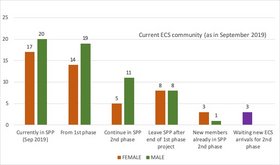
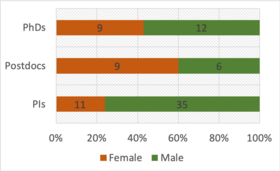
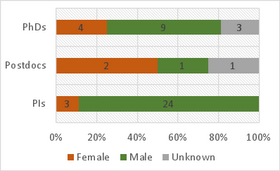
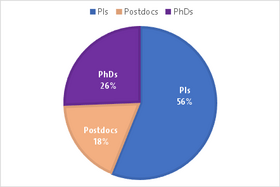
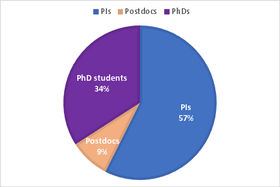
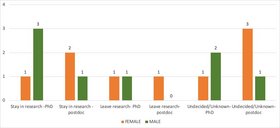
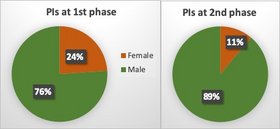

Currently, 36 young scientists (based on data collected in August/September 2019) do their research within the SPP SeaLevel on a PhD or postdoc level, including 4 new ECS members who already joined the program for its 2nd phase (Fig. 1), while 3 further ECS are due to be hired within the next few months. 33 members from the above belong to projects from the 1st phase of the program, some of which are due to conclude their work within the next short-term period, while others have ensured a longer extension of their project (due to e.g. parental leave), and therefore, will continue within the SPP program beyond the end of 2019.
Nevertheless, as regards the 2nd phase projects, only 16 ECS from the old group will continue their research for another 3-year period, as their corresponding projects were granted funds in the new phase. In their majority, the extended funding will allow the young scientists to complete their PhD work, or/and to progress it eventually on a postdoc level (Fig. 1 and 2).
Overall, there is a reduction of the total number of the SPP SeaLevel members from the 1st phase by 43% (based on data in Aug. 2018 for the 1st phase), given also that the funded research projects dropped off from 20 to 14 in the 2nd phase, in addition to the Coordination project. This decrease is further reflected on the ECS group, which during the 1st phase, comprised of 21 postdocs and 15 PhD students, i.e. respectively 9% and 7% less young members in the 2nd phase, as compared to the proportionally similar number of PI members between the two phases (Fig. 2).
Among the young scientists of the 1st phase of the program who have already departed from the SPP SeaLevel program or will eventually in the coming period due to the project’s end or a personal shift in their professional position/institution, only 6 of them clearly denote to continue pursuing a research career (Fig. 3). 3 ECS members have already decided to leave research/academia and follow a different career path, such as to private sector, NGOs, etc., while 7 of them are still undecided or did not volunteer to provide information on their next professional steps. Fig. 9 also demonstrates the gender distribution in each of the above categories, and the current professional status of the ECS members, i.e. whether on a PhD or postdoc level.
And how about the rest of the SPP community? The smaller number of research projects funded in the 2nd phase is also reflected on the PIs community with a reduction of about 59%, i.e. from 46 in the 1st to 27 members in the 2nd phase. The decrease is particularly apparent at the number of females with only 3 women supervising projects as PIs within the new phase, i.e. ~ 13% less than in the 1st round (Fig. 3, 4 and 5). The proportion of Doctors versus Professors among the PIs is balanced at the 2nd phase, with a 69% decrease of members on Professorship level at the new structure of the SPP SeaLevel.
